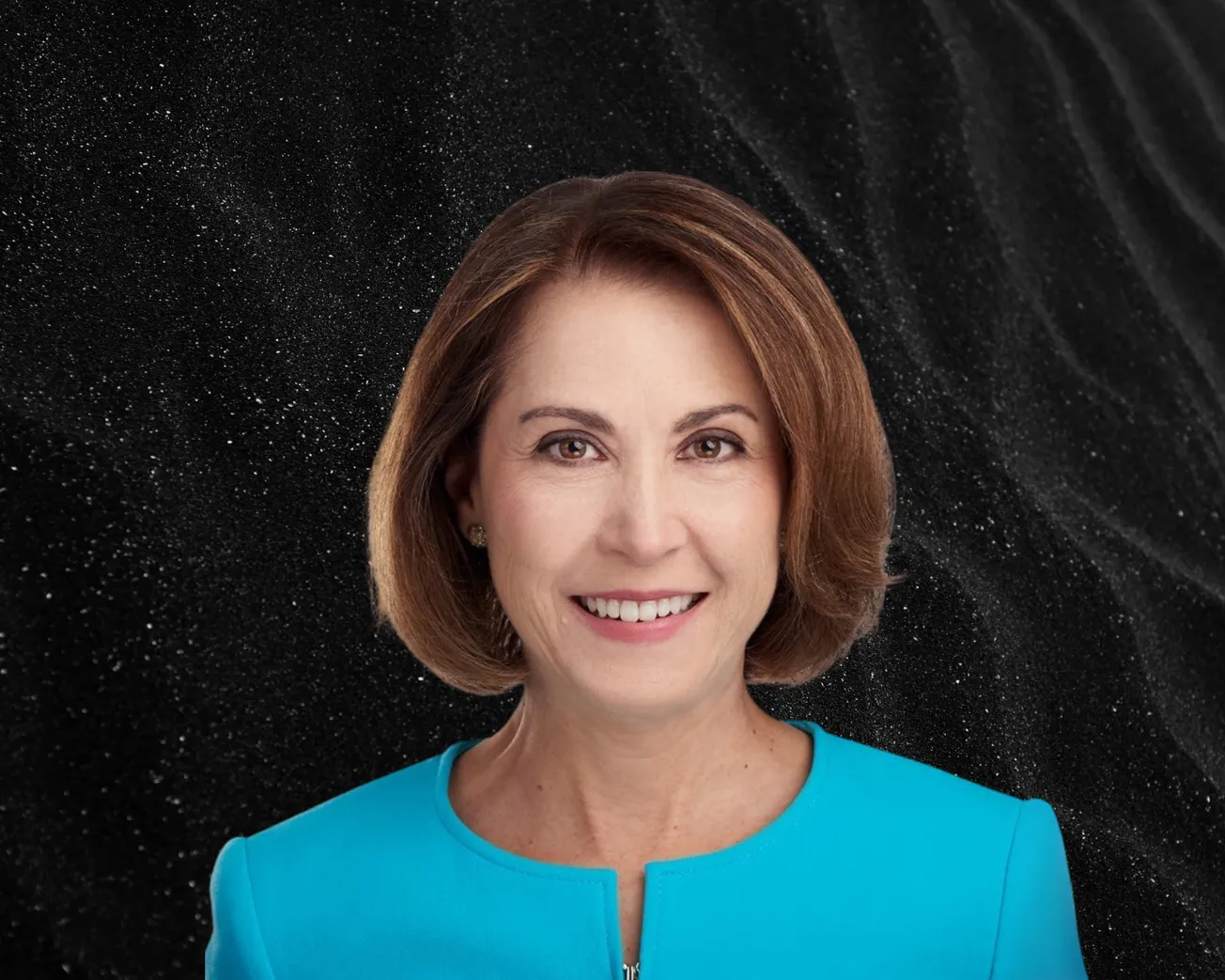Table of Contents
Jake Joraanstad, CEO of Bushel, sat down with Onyx for a feature-length interview.
Could you start by giving our readers a bit of background into your career journey?
I grew up in rural North Dakota, in a small town of about 1,500 people, 10 miles from the Canadian border. As cold as it gets in the United States - most of the time, we’re one of the coldest places in the winter, and then it can also be hot in the summer. My mom was a nurse, and my dad was a banker.
I went to school for Computer Engineering, and to cut a long story short, I had a few internships and realized that I really enjoyed software. As I was finishing school, we started a company doing software development. This was when the iPhone and Android were coming to market, so there were a lot of opportunities. Software that just works in your pocket felt like such a big deal. So, for many years, we pursued that.
Until about 2016, we were building software for anybody who needed tools. Early on, we worked on products for the app stores; back then, we even did some work with the Microsoft store! But we realized something. I was at North Dakota State, in Fargo, and all of us knew agriculture - coming from families who had either grown up on, or around, farms. Every time we had an agricultural project, we seemed to excel. We knew how to talk to the sector. Even if we were a bunch of technology nerds, we understood agriculture.
Eventually, my co-founder, Ryan, said, "I think we need to solve problems for the grain industry." At that time, the transition hadn’t really been made from paper to digital. Our first idea was simple: a farmer shouldn’t have to keep track of their scale ticket, the paper receipt that they receive from the grain elevator. If we could digitize that, or give them access without having to scan it, then, during harvest, life would get a lot easier. We stumbled our way into a much bigger opportunity than we had, at first, anticipated.
Can you explain what Bushel’s platform provides?
Bushel’s main customers are those in agribusiness; particularly grain companies; retailers; co-ops; ethanol plants; mills; as well as whoever’s buying grain and selling inputs. What we do is provide them with software capabilities with their branding and their data, so they can serve their farmers, digitally.
Traditionally, farmers would make phone calls, or send texts, to get business done. We enable that same capability but also provide them with the ability to self-serve, online. The first thing we built was a mobile app for farmers - because they’re always on the move; on their phone, making offers, signing contracts, paying bills, and getting paid. That’s what we do: we help companies, and farmers, to digitize workflows that used to be just conducted by text messages and phone calls.
We work with everyone: from some of the largest, and most recognizable, grain-trading organizations in the U.S., all the way down to small and medium co-ops and elevators in rural areas. Our tools scale right across the board.
Farmers of all sizes use them. You might just make a few deliveries a year, and use our tools to handle that; or you might run tens of thousands of acres and use Bushel Farm to manage your rainfall, fields, and P&L. Most of our business is around row crops, and commodity crops, in the U.S. and Canada.
What’s the structure of your business model? Fixed-subscription or usage-based?
We’re a SaaS company. Our core business is selling annual, or multi-year, licenses. Farmers can also buy licenses for certain tools. We don’t sell physical goods. We don’t try to buy your grain. We help other companies do that; and we facilitate digital transactions, from a software and payments perspective.
The core platform is a fixed annual fee that you understand up-front. Then, on the payments side and for other tools, it might be transaction- or seat-based. Some companies have two or three traders. Some have a hundred. We try to fit the bill, depending on scale.
Some say that 40-50% of U.S. grain already runs through Bushel. How close are you to your total addressable market?
That’s from having a few majors that have given us a big share of grain origination. But the rest of the supply chain is super diverse. We might have 50% by volume, but only 5-10% of the logos.
There are thousands of customers whom we don’t yet serve. In the U.S., there are 300,000 to a million farmers who we could qualify as being big enough to be meaningful contributors to the space. Around 100,000 of them use our software, and about 10% pay for anything of ours.
So, the opportunity is still huge. But margins in agriculture are always tight. You have to show up with efficiency and savings; otherwise, you won’t make progress!
Transparency and traceability are hot topics right now. How does Bushel contribute?
In U.S. agriculture, today, we’ve swung to the extremes. We’ve gone from ‘sustainability is not our thing’ to ‘agriculture is the only solution to sustainability’.
I think that the truth is somewhere in the middle. Farmers will tell you, straight up: "We are literally stewards of the land." The only thing that matters to them, long-term, is the sustainability of their farm and their land. So, when people assume that farmers here haven't been sustainable, it’s challenging.
Remember, photosynthesis means that crops literally take carbon out of the air and put it in the ground, powered by sunlight. Of all the solutions in carbon sequestration, agriculture proves both challenging and an answer.
For Bushel, our number one priority is helping customers to be financially sustainable. Then, as they run their 2030 or 2050 commitments, we can help. Not by building sequestration models - lots of great companies do that - but by getting adoption. That’s the hard part. You can’t afford to manage sustainability programs, manually, for every farmer. You need tools to help.
That’s where we come in. For example, Bushel Farm lets a farmer track digital records: tillage practices; fertilizer usage; and rainfall. When they’re in a program, they can say, "Here are my activities for the last three years." That’s the data you need to calculate impact. But a lot of farmers haven’t yet started digital recordkeeping. Helping with that is part of our job.
Is there a particular part of the grain supply chain where you really move the needle on emissions?
There are two areas. First, giving farmers a record, and proof, of their best practices and changes over time. Second, on renewable fuels. In the U.S., that means ethanol and renewable diesel from soybeans. Corn and soy are big drivers, with some canola, too.
A lot of our customers are ethanol producers, or large soybean crushing plants. We help them to understand their farmer base, and to facilitate the running of programs based upon that knowledge. But if people have been paying attention to the U.S., then they’ll know that the rules keep changing with different administrations. That makes it hard for customers to decide whether to go big, small, or somewhere in between, on carbon intensity scoring.
The thing that we’re most bullish about is §40B and §45Z. They’re part of a tax rebate program for ethanol facilities and crush plants that lower emissions. It incentivizes investments and can even pass benefits along to farmers.
It works because it drives energy policy in the right direction - all energy is good energy, but renewable fuels become more renewable. We can grow a heck of a corn and soybean crop, here in the U.S., so using that for U.S. energy - renewably and sustainably - makes sense.
Are small to midsize businesses resistant to digitalization?
People often think farmers are behind in technology adoption. The opposite is true! Farmers were early adopters of autonomous tractors, satellite imagery, and precision data. The real challenge is the supply chain in between.
These folks have done things the same way for decades. Around 80% of payments in agriculture are still made in paper checks. So, when you think that we’re literally using gasoline to move paper checks around - it’s wild!
Many of the systems that they’re running date back to the ’90s or early 2000s. Some are still on IBM’s AS/400s! Very few are cloud-based. So, the resistance isn’t at the farm gate - it’s in the infrastructure. That’s the layer we’re working on.
How do you see the AI boom - Has it peaked or is it stabilizing?
For the first year or two, there was hype. But this isn’t blockchain. Bitcoin may be here to stay, but blockchain never really made a dent in agriculture.
AI is not the next blockchain. It’s already solving problems and making us rethink our core business. It has slowed down, in the sense that the space is more stable now. That’s good! It means the tools aren’t breaking every six months, so companies like us can actually apply them.
Our dev teams use AI every day, for massive efficiency gains. But more importantly are its applications to business outcomes. In agriculture, very few people are thinking about how AI fits into the supply chain. We’ve had to figure out how to adapt it.
Now, we’re seeing real value for customers. They’re using chatbots to manage farmer relationships. They can skip building reports and just ask AI a question; if you’ve built your tools right, you’ll get the answer straight away. That’s powerful!
Over the next decade, what’s the path for Bushel?
Our dream is to be the common link in the agricultural supply chain - the layer that connects the core business systems. If we make information exchange secure, clear, and easy, the whole chain becomes more efficient.
Unlike in industries where AI threatens jobs, agriculture has the opposite problem; there aren’t enough people. Rural America doesn’t have the workforce. Scaling is hard. So, here, we welcome tools that let companies scale, improve margins and better serve farmers, without adding to headcount.
What advice would you give another executive who’s trying to make their mark in agricultural tech?
Remember: The American farmer gets one shot a year. They don’t iterate like Silicon Valley. If they’re lucky, they’ll get 40 or 50 crops in a lifetime. That’s it!
So, when you propose solutions, just know that the cycle is different. Internally, you can fail fast, but when you deliver, it has to work! Trust is everything. If your product fails, that farmer doesn’t get a do-over.
Show up with something that solves a real problem and try really hard to make sure it works. That’s the only way.






